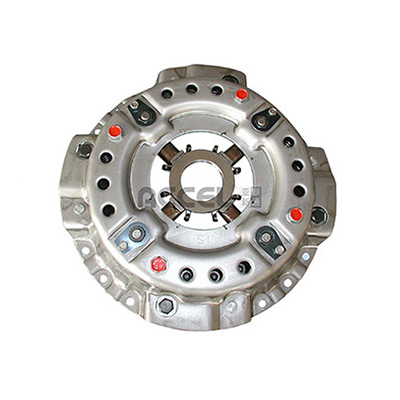- Arabic
- French
- Russian
- Spanish
- Portuguese
- Turkish
- Armenian
- English
- Albanian
- Amharic
- Azerbaijani
- Basque
- Belarusian
- Bengali
- Bosnian
- Bulgarian
- Catalan
- Cebuano
- Corsican
- Croatian
- Czech
- Danish
- Dutch
- Afrikaans
- Esperanto
- Estonian
- Finnish
- Frisian
- Galician
- Georgian
- German
- Greek
- Gujarati
- Haitian Creole
- hausa
- hawaiian
- Hebrew
- Hindi
- Miao
- Hungarian
- Icelandic
- igbo
- Indonesian
- irish
- Italian
- Japanese
- Javanese
- Kannada
- kazakh
- Khmer
- Rwandese
- Korean
- Kurdish
- Kyrgyz
- Lao
- Latin
- Latvian
- Lithuanian
- Luxembourgish
- Macedonian
- Malgashi
- Malay
- Malayalam
- Maltese
- Maori
- Marathi
- Mongolian
- Myanmar
- Nepali
- Norwegian
- Norwegian
- Occitan
- Pashto
- Persian
- Polish
- Punjabi
- Romanian
- Samoan
- Scottish Gaelic
- Serbian
- Sesotho
- Shona
- Sindhi
- Sinhala
- Slovak
- Slovenian
- Somali
- Sundanese
- Swahili
- Swedish
- Tagalog
- Tajik
- Tamil
- Tatar
- Telugu
- Thai
- Turkmen
- Ukrainian
- Urdu
- Uighur
- Uzbek
- Vietnamese
- Welsh
- Bantu
- Yiddish
- Yoruba
- Zulu
נוב . 10, 2024 16:53 Back to list
Understanding Automotive V Belts for Optimal Engine Performance and Durability
Understanding Automotive V-Belts The Backbone of Engine Efficiency
Automotive V-belts play a crucial role in the functioning of internal combustion engines. As a flexible looped device, V-belts transmit power from the engine’s crankshaft to various accessories, ensuring that vehicles operate smoothly and efficiently. This essential component is often overlooked, yet it is integral to the vehicle's overall performance.
Composition and Design
V-belts are typically made from a combination of rubber and textile materials, which provide strength, flexibility, and resistance to wear. The V shape of the belt is designed to fit into corresponding grooves of pulleys, creating a wedge effect that ensures a tight grip. This design is significant for minimizing slippage, allowing for efficient energy transfer.
The construction of V-belts has evolved over the years, with advancements in materials and manufacturing processes. Modern V-belts may incorporate synthetic fibers and compounds that offer increased durability and heat resistance. Consequently, they not only last longer but also improve energy efficiency, impacting fuel economy positively.
Functionality in Automotive Systems
In an automotive setting, V-belts are primarily responsible for driving accessories such as the alternator, power steering pump, water pump, and air conditioning compressor. The crankshaft provides the initial power, which is then transmitted through the V-belt to these components, ensuring that they function correctly. If the V-belt were to fail or become worn, the consequences would lead to a breakdown in these systems, illustrating the belt's critical function.
For instance, a malfunctioning V-belt can result in a non-functioning alternator, leading to a dead battery, or it could cause the engine to overheat by failing to drive the water pump efficiently. Regular inspections and timely replacements of V-belts are therefore essential for maintaining vehicle reliability.
automotive v belt

Signs of Wear and Maintenance
Detecting the early signs of wear in V-belts is crucial for preventing vehicular issues. Common indicators of a failing V-belt include squeaking or chirping noises, visible cracks or fraying, and a noticeable decrease in performance of the driven accessories. Regular maintenance checks should include visual inspections for signs of wear, as well as adequate tensioning adjustments to avoid slippage.
Most manufacturers recommend replacing V-belts approximately every 60,000 to 100,000 miles, but this can vary based on specific vehicle models and driving conditions. For instance, frequent short trips in tough driving conditions might necessitate more regular replacements.
Future Trends The Shift to Serpentine Belts
While traditional V-belts remain widely used, there's a notable trend toward serpentine belts in modern vehicles. These belts feature a longer loop and can drive multiple accessories simultaneously, simplifying the engine compartment. Serpentine belts also boast advantages such as improved fuel efficiency and reduced weight, making them a more attractive option for automotive engineers.
However, despite the shift in trends, V-belts will likely remain in use due to their reliability and efficiency in specific applications. Their simple design and easy replacement make them a staple in automotive engineering.
Conclusion
Automotive V-belts, while often taken for granted, are essential components that ensure vehicles operate efficiently. Understanding their construction, function, and maintenance can help vehicle owners appreciate their value and importance. With continuous advancements in materials and designs, V-belts will remain a vital part of automotive technology, driving not just accessories, but also the evolution of vehicle performance. Regular maintenance of these belts can lead to safer, more reliable driving experiences, underscoring their significance in everyday automotive engineering.
-
Korean Auto Parts Timing Belt 24312-37500 For Hyundai/Kia
NewsMar.07,2025
-
7PK2300 90916-T2024 RIBBED BELT POLY V BELT PK BELT
NewsMar.07,2025
-
Chinese Auto Belt Factory 310-2M-22 For BMW/Mercedes-Benz
NewsMar.07,2025
-
Chinese Auto Belt Factory 310-2M-22 For BMW/Mercedes-Benz
NewsMar.07,2025
-
90916-02660 PK Belt 6PK1680 For Toyota
NewsMar.07,2025
-
drive belt serpentine belt
NewsMar.07,2025

